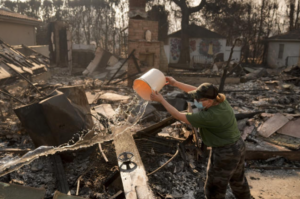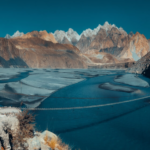As former President Donald Trump prepares to tour wildfire damage in California, he has reignited criticism of the state’s water management policies. His claims center on the distribution of water resources, raising questions about California’s water policies and their connection to firefighting challenges. Here’s a breakdown of the facts, key issues, and potential impacts of Trump’s stance on California water policy.
Southern California’s Water Sources
Where Does the Water Come From?
- Geographic Imbalance: Most of California’s water resources are located in the northern part of the state, while the majority of its population resides in the drier south.
- Water Systems: Two major systems distribute water:
- Central Valley Project (Federal): Transfers water from northern reservoirs to farms in the Central Valley.
- State Water Project (California): Channels water to cities and farms, including Southern California.
- Additional Sources:
- Local groundwater supplies provide about 50% of Southern California’s water.
- Los Angeles also relies on its own aqueducts from the Sierra Nevada mountains.
Role of the Sacramento-San Joaquin River Delta
- Acts as a hub for both federal and state water systems.
- Supports endangered fish species like the delta smelt and salmon.
- Balances ecological needs with water demands for agriculture and cities.
Federal and State Authority on Water Management
Federal Oversight
- The federal government influences how much water is allocated for ecological protection and Central Valley farming through the Central Valley Project.
- Coordination between federal and state systems ensures balanced water distribution.
Trump’s Previous Actions
- His administration increased water allocation to Central Valley farmers, reducing flow to the delta.
- Environmentalists criticized this move, citing risks to endangered species.
- Current Biden administration policies have attempted to address some of these ecological concerns.
Trump’s Current Stance
- Trump has repeatedly claimed that excessive water is diverted to the Pacific Ocean instead of benefiting farmers and urban areas.
- His calls for rerouting water have gained support among Central Valley farmers, especially following recent droughts and water scarcity.
- Major storms in 2023 briefly alleviated drought conditions, but water shortages have resurfaced in some areas.
Firefighting Challenges in Los Angeles
Wildfires and Water Access
- Trump linked California’s water policies to firefighting challenges, but experts disagree.
- The lack of water for Pacific Palisades fire hydrants was due to:
- Overstressed hydrants.
- Maintenance on the nearby Santa Ynez Reservoir.
Local Storage Capacity
- Metropolitan Water District of Southern California reports sufficient water storage for three years.
- Federal water allocations have minimal impact on Los Angeles firefighting efforts.
Environmental and Policy Implications
Farmers vs. Fish Debate
- Central Valley farmers argue for more water allocations to sustain agriculture.
- Environmentalists caution that increasing water diversions harms ecosystems and endangered species.
Infrastructure and Climate Challenges
- California faces intensifying droughts and wildfires due to climate change.
- Investments in water infrastructure, such as reservoirs and conservation measures, are crucial.
Water Policy
While Trump’s comments on California’s water policies resonate with some farming communities, they have little relevance to the firefighting issues in Los Angeles. The state’s complex water systems must balance ecological protection, urban needs, and agricultural demands. Effective water management and climate adaptation strategies are essential for California’s future.
References
- Public Policy Institute of California’s Water Policy Center
- Metropolitan Water District of Southern California
- Federal and state water management guidelines
















